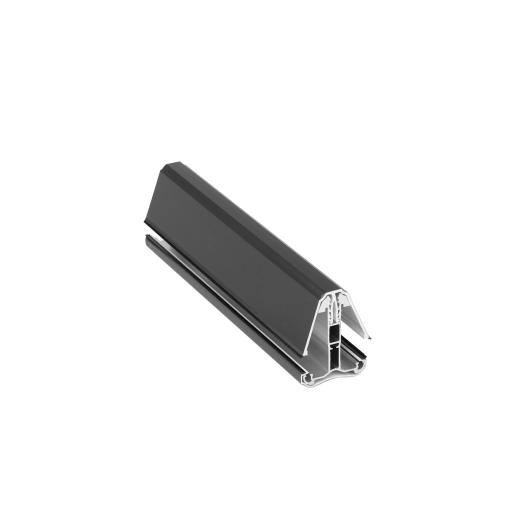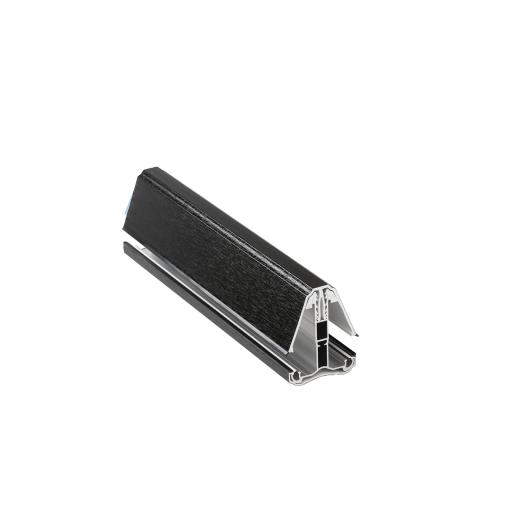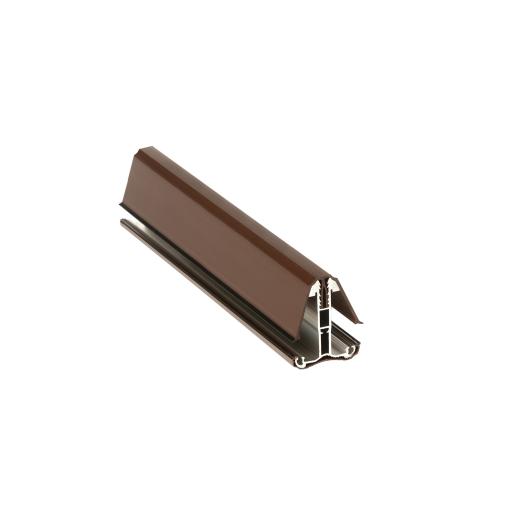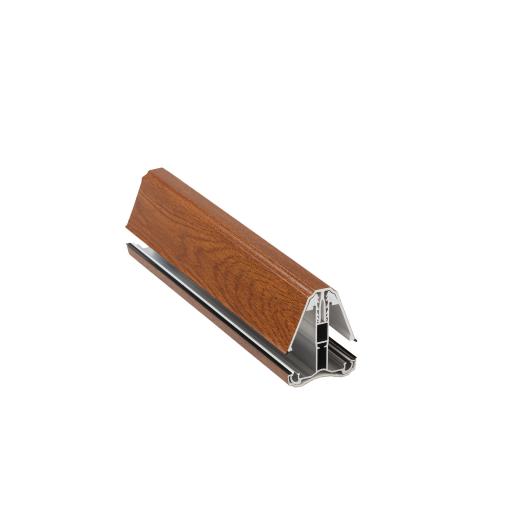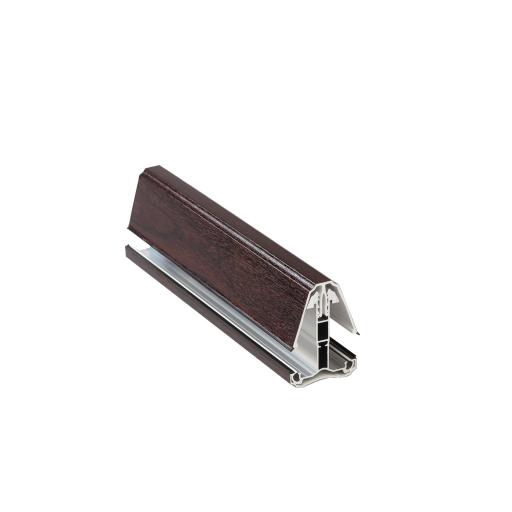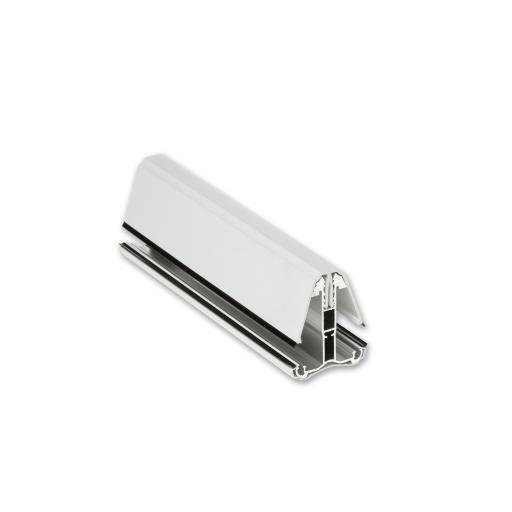Welcome to Building Plastics Online your No.1 Choice for High Quality Building Plastics in the UK
- MENU
-
Fascia & Soffit
-
- FASCIA BOARD
- White Fascia Board - Smooth
- Black Ash Fascia Board - Grained
- Anthracite Fascia Board - Grained
- Rosewood Fascia Board - Grained
- Golden Oak Fascia Board - Grained
- Chartwell Green Fascia Board - Grained
- Plain Black UPVC Fascia Board
- Plain Grey UPVC Fascia Board
- Cream UPVC Fascia Board
- Dark Grey UPVC Fascia Board
- Slate Grey UPVC Fascia Board
- Irish Oak UPVC Fascia Board
- Foiled White UPVC Fascia Board
- Green UPVC Fascia Board
- Blue UPVC Fascia Board
- Red UPVC Fascia Board
- UPVC SOFFIT BOARD
- White Soffit Board - Smooth
- Black Ash Soffit Board - Grained
- Anthracite Soffit Board - Grained
- Rosewood Soffit Board - Grained
- Golden Oak Soffit Board - Grained
- Chartwell Green Soffit Board - Grained
- Plain Black UPVC Soffit Board
- Plain Grey UPVC Soffit Board
- Cream UPVC Soffit Board
- Dark Grey UPVC Soffit Board
- Slate Grey UPVC Soffit Board
- Irish Oak UPVC Soffit Board
- White Foiled UPVC Soffit Board
- Rustic Green UPVC Soffit Board
- Royal Blue UPVC Soffit Board
- Red UPVC Soffit Board
-
-
Roofing Sheets
-
- ROOFING POLYCARBONATE - POPULAR SIZES
- Twin Wall Polycarbonate Sheets - Clear, Opal & Bronze
- Triple Wall Polycarbonate Sheets - Clear Opal & Bronze
- Multi Wall Polycarbonate Sheets - Clear, Opal & Bronze
- Glazing Bars & Accessories
- ROOFING POLYCARBONATE - CUT TO SIZE
- Cut-To-Size Twinwall Polycarbonate Sheets
- Cut-To-Size Triplewall Polycarbonate Sheets
- Cut-To-Size Multiwall Polycarbonate Sheets
- Glazing Bars & Accessories
- EZ Glaze Polycarbonate Roof Sheets
- EZ Glaze Polycarbonate Corrugated Roof Sheet
- EZ Glaze Accessories
- CORRUGATED ROOFING SHEET
- Clear Corrugated Roofing Sheets
- Bitumen Corrugated Roofing Sheet & Accessories
- SOLID POLYCARBONATE SHEET
- Cut to Size Solid Polycarbonate Sheet
- Polycarbonate Greenhouse Glazing Panes
-
-
Exterior Cladding
-
- EUROCELL UPVC EXTERIOR SHIPLAP CLADDING
- White Shiplap Cladding
- Black Ash Shiplap Cladding
- Anthracite Shiplap Cladding
- Rosewood Shiplap Cladding
- Golden Oak Shiplap Cladding
- Homeline UPVC Exterior Shiplap Cladding
- White UPVC Shiplap Cladding
- Rosewood UPVC Shiplap Cladding
- Light Oak UPVC Shiplap Cladding
- Black UPVC Shiplap Cladding
- Anthracite Grey UPVC Shiplap Cladding
- Dark Grey UPVC Shiplap Cladding
- Slate Grey UPVC Shiplap Cladding
- Chartwell Green UPVC Shiplap Cladding
- Irish Oak UPVC Shiplap Cladding
- Cream UPVC Shiplap Cladding
- Foiled White UPVC Shiplap Cladding
- Red UPVC Shiplap Cladding
- Blue UPVC Shiplap Cladding
- Rustic Green UPVC Shiplap Cladding
- Plain Grey UPVC Shiplap Cladding
- Plain Black UPVC Shiplap Cladding
- COASTLINE EXTERIOR CLADDING
- Anthracite Grey Coastline Cladding
- Moondust Grey Coastline Cladding
- Oyster White Coastline Cladding
- Pigeon Blue Coastline Cladding
- Soft Green Coastline Cladding
- Taupe Coastline Cladding
-
-
Gutter & Drainage
-
- ROUND GUTTERING
- Kalsi Black Round Gutter
- FloPlast Black Round Gutter
- Kalsi White Round Gutter
- FloPlast White Round Gutter
- Kalsi Anthracite Grey Round Gutter
- FloPlast Anthracite Round Gutter
- Kalsi Brown Round Gutter
- FloPlast Brown Round Gutter
- FloPlast Light Grey Round Gutter
- SQUARE GUTTERING
- Kalsi Black Square Gutter
- FloPlast Black Square Gutter
- Kalsi White Square Gutter
- FloPlast White Square Gutter
- Kalsi Anthracite Grey Square Gutter
- FloPlast Anthracite Square Gutter
- Kalsi Brown Square Gutter
- Floplast Brown Square Gutter
- OGEE GUTTERING
- Kalsi Black Ogee Gutter
- FloPlast Black Ogee Gutter
- Kalsi White Ogee Gutter
- Floplast White Ogee Gutter
- Kalsi Anthracite Grey Ogee Gutter
- FloPlast Anthracite Ogee Gutter
- Kalsi Brown Ogee Gutter
- FloPlast Brown Ogee Gutter
- DEEPFLOW GUTTERING
- Kalsi Black Deepflow Gutter
- FloPlast Black Deepflow Gutter
- Kalsi White Deepflow Gutter
- FloPlast White Deepflow Gutter
- Kalsi Anthracite Deepflow Gutter
- FloPlast Anthracite Deepflow Gutter
- Kalsi Brown Deepflow Gutter
- FloPlast Brown Deepflow Gutter
- FloPlast Light Grey Deepflow Gutter
- FloPlast Black Cast Iron Gutter - Round & Ogee
- FloPlast Black Cast Iron Gutter
- TwinPlas Box Gutter
- TwinPlas Box Gutter
- FloPlast Gutter Accessories
- FloPlast Gutter Accessories
- FloPlast Soil Pipes & Fittings
- FloPlast Black Soil Pipe & Fittings
- FloPlast White Soil Pipe & Fittings
- FloPlast Grey Soil Pipe & Fittings
- FloPlast Underground Drainage
- FloPlast Underground Pipe
- FloPlast Underground Pipe Fittings
- FloPlast Underground Chambers & Gulleys
- FloPlast Underground Drainage Channel
-
-
PVC Skirting
-
Interior Cladding & Flooring
-
- Hygienic Wall Cladding
- White Hygienic Wall Cladding
- Pastel Hygienic Wall Cladding
- Gloss Hygienic Wall Cladding
- Hygienic Ceiling Cladding
- Hygienic Wall Cladding Adhesive
- Hygienic Wall Cladding Samples
- PVC BATHROOM & SHOWER CLADDING
- Large PVC Bathroom & Shower Wall Panels
- Large PVC Bathroom & Shower Wall Panel Trims & Adhesive
- 250mm Bathroom & Shower Wall Panels
- 250mm Bathroom & Shower Wall Panel Trims & Adhesive
- Decorative PVC Ceiling Cladding
- Perform Panel - Laminate Shower & Bathroom Wall Panels
- Perform Panel - Origins Collection
- Perform Panel - Elegance Collection
- Perform Panel - Harmony Collection
- Perform Panel - Trims & Adhesive
-
-
Window Sills
-
- INTERNAL WINDOW SILLS
- UPVC White Window Board & Sill
- UPVC Black Ash Window Board & Sill
- UPVC Rosewood Window Board & Sill
- UPVC Golden Oak Window Board & Sill
- UPVC Anthracite Window Board & Sill
- Laminated Solid Replacement Window Board
- Laminated Solid / Replacement Window Board
- Laminated Window Sill Accessories
- EUROCELL PVC ARCHITRAVES & TRIMS
- White PVC Trims
- Anthracite PVC Trims
- Black Ash PVC Trims
- Golden Oak PVC Trims
- Rosewood PVC Trims
-
-
Outdoor Living
-
- OUTDOOR LIVING & GARDEN BUILDING
- Door Canopies - Polycarbonate & Aluminium
- Greenhouses - Polycarbonate & Aluminium
- Sunrooms - Polycarbonate & Aluminium
- Conservatories - Polycarbonate & Aluminium
- Garden Offices - Polycarbonate & Aluminium
- Carports - Polycarbonate & Aluminium
- Garden Sheds - Polycarbonate & Aluminium
- Gazebos - Polycarbonate & Aluminium
- Patio Covers - Polycarbonate & Aluminium
- Pool Enclosures - Polycarbonate & Aluminium
-
- Adhesive, Sealants & Fixings
- Composite Doors
FREE DELIVERY AVAILABLE On 1000s of products |
PREMIUM QUALITY PRODUCTS We stock ONLY high quality plastics |
UNBEATABLE SUPPORT Our customer support is second to none |
OVER 200 UK BRANCHES 200+ Branches delivery or Click & Collect |
Welcome to Building Plastics Online your No.1 Choice for High Quality Building Plastics in the UK
MENU
- FASCIA BOARD
- UPVC SOFFIT BOARD
- Fascia & Soffit Accessories
- EASY VERGE
- ROOFING POLYCARBONATE - POPULAR SIZES
- ROOFING POLYCARBONATE - CUT TO SIZE
- EZ GLAZE POLYCARBONATE ROOF SHEETS
- CORRUGATED ROOFING SHEET
- SOLID POLYCARBONATE SHEET
- EVOLUTION CANOPY SYSTEM
- LUMA ROOF LIGHTS
- ENVIROTILE ROOFING
- Britmet Slate Roof Tiles
- SKYPOD ROOF LANTERNS
- EUROCELL UPVC EXTERIOR SHIPLAP CLADDING
- HOMELINE UPVC EXTERIOR SHIPLAP CLADDING
- COASTLINE EXTERIOR CLADDING
- Embossed 300mm Double Shiplap
- PVC Tudor Board
- ROUND GUTTERING
- SQUARE GUTTERING
- OGEE GUTTERING
- DEEPFLOW GUTTERING
- Floplast Cast Iron Gutter
- TwinPlas Box Gutter
- Floplast Gutter Accessories
- FloPlast Soil Pipes & Fittings
- FloPlast Underground Drainage
- 100mm Torus Skirting Board
- 100mm Chamfered Skirting Board
- 150mm Torus Skirting Board
- 150mm Chamfered Skirting Board
- Door Architrave
- Hygienic Wall Cladding
- PVC BATHROOM & SHOWER CLADDING
- Perform Panel - Laminate Shower & Bathroom Wall Panels
- SplashBax Acrylic & Di-Bond Shower Panels
- Wood & Stone Effect Flooring
- INTERNAL WINDOW SILLS
- Laminated Solid Replacement Window Board
- Bettaboard Laminated Internal Window Window Sills
- EXTERIOR WINDOW SILLS
- EUROCELL PVC ARCHITRAVES & TRIMS
- GAP PVC ARCHITRAVES & TRIMS
- COMPOSITE PLASTIC FENCING
- COMPOSITE DECKING
- OUTDOOR LIVING & GARDEN BUILDING
- White UPVC Fascia Board
- Black Ash UPVC Fascia Board
- Anthracite UPVC Fascia Board
- Rosewood UPVC Fascia Board
- Golden Oak Fascia Board - Grained
- Chartwell Green Fascia Board
- Plain Black UPVC Fascia Board
- Plain Grey UPVC Fascia Board
- Cream UPVC Fascia Board
- Dark Grey UPVC Fascia Board
- Slate Grey UPVC Fascia Board
- Irish Oak UPVC Fascia Board
- Foiled White UPVC Fascia Board
- Green UPVC Fascia Board
- Blue UPVC Fascia Board
- Red UPVC Fascia Board
- White Soffit Board - Smooth
- Black Ash Soffit Board - Grained
- Anthracite Soffit Board - Grained
- Rosewood Soffit Board - Grained
- Golden Oak Soffit Board - Grained
- Chartwell Green Soffit Board - Grained
- Plain Black UPVC Soffit Board
- Plain Grey UPVC Soffit Board
- Cream UPVC Soffit Board
- Dark Grey UPVC Soffit Board
- Slate Grey UPVC Soffit Board
- Irish Oak UPVC Soffit Board
- White Foiled UPVC Soffit Board
- Rustic Green UPVC Soffit Board
- Royal Blue UPVC Soffit Board
- Red UPVC Soffit Board
- Fascia & Soffit Accessories
- Fascia & Soffit Accessories
- Dry Verge Systems
- Eaves Protector, Bird Comb & Over Fascia Vent
- Twin Wall Polycarbonate Sheets - Clear, Opal & Bronze
- Triple Wall Polycarbonate Sheets - Clear Opal & Bronze
- Multi Wall Polycarbonate Sheets - Clear, Opal & Bronze
- Glazing Bars & Accessories
- Cut-To-Size Twinwall Polycarbonate Sheets
- Cut-To-Size Triplewall Polycarbonate Sheets
- Cut-To-Size Multiwall Polycarbonate Sheets
- Glazing Bars & Accessories
- EZ Glaze Polycarbonate Corrugated Roof Sheet
- EZ Glaze Accessories
- Clear Corrugated Roofing Sheets
- Bitumen Corrugated Roofing Sheet & Accessories
- Cut to Size Solid Polycarbonate Sheet
- Polycarbonate Greenhouse Glazing Panes
- EVOLUTION CANOPY SYSTEM
- Evolution Canopy System
- Luma Roof Lights - Double Glazed
- Luma Roof Lights - Triple Glazed
- Envirotile Slate Finish
- Envirotile Smooth Finish
- Envirotile Components & Accessories
- Britmet Slate Roof Tiles
- Britmet Slate Roof Tiles
- Skypod
- Skypod PLUS
- White Shiplap Cladding
- Black Ash Shiplap Cladding
- Anthracite Shiplap Cladding
- Rosewood Shiplap Cladding
- Golden Oak Shiplap Cladding
- White UPVC Shiplap Cladding
- Rosewood UPVC Shiplap Cladding
- Light Oak UPVC Shiplap Cladding
- Black UPVC Shiplap Cladding
- Anthracite Grey UPVC Shiplap Cladding
- Dark Grey UPVC Shiplap Cladding
- Slate Grey UPVC Shiplap Cladding
- Chartwell Green UPVC Shiplap Cladding
- Irish Oak UPVC Shiplap Cladding
- Cream UPVC Shiplap Cladding
- Foiled White UPVC Shiplap Cladding
- Red UPVC Shiplap Cladding
- Blue UPVC Shiplap Cladding
- Rustic Green UPVC Shiplap Cladding
- Plain Grey UPVC Shiplap Cladding
- Plain Black UPVC Shiplap Cladding
- Anthracite Grey Coastline Cladding
- Moondust Grey Coastline Cladding
- Oyster White Coastline Cladding
- Pigeon Blue Coastline Cladding
- Soft Green Coastline Cladding
- Taupe Coastline Cladding
- Embossed 300mm Double Shiplap
- White Embossed 300mm Double Shiplap
- Cream Embossed 300mm Double Shiplap
- Sand Embossed 300mm Double Shiplap
- Light Grey Embossed 300mm Double Shiplap
- Dark Grey Embossed 300mm Double Shiplap
- PVC Tudor Board
- Kalsi Black Round Gutter & Fittings
- FloPlast Black Round Gutter & Fittings
- Kalsi White Round Gutter & Fittings
- FloPlast White Round Gutter & Fittings
- Kalsi Anthracite Grey Round Gutter & Fittings
- FloPlast Anthracite Grey Round Gutter & Fittings
- Kalsi Brown Round Gutter & Fittings
- FloPlast Brown Round Gutter & Fittings
- FloPlast Light Grey Round Gutter & Fittings
- Kalsi Black Square Gutter & Fittings
- FloPlast Black Square Gutter & Fittings
- Kalsi White Square Gutter & Fittings
- FloPlast White Square Gutter & Fittings
- Kalsi Anthracite Grey Square Gutter & Fittings
- FloPlast Anthracite Grey Square Gutter & Fittings
- Kalsi Brown Square Gutter & Fittings
- Floplast Brown Square Gutter & Fittings
- Kalsi Black Ogee Gutter & Fittings
- FloPlast Black Ogee Gutter & Fittings
- Kalsi White Ogee Gutter & Fittings
- Floplast White Ogee Gutter & Fittings
- Kalsi Anthracite Grey Ogee Gutter & Fittings
- FloPlast Anthracite Grey Ogee Gutter & Fittings
- Kalsi Brown Ogee Gutter & Fittings
- FloPlast Brown Ogee Gutter & Fittings
- Kalsi Black Deepflow Gutter & Fittings
- FloPlast Black Deepflow Gutter & Fittings
- Kalsi White Deepflow Gutter & Fittings
- FloPlast White Deepflow Gutter & Fittings
- Kalsi Anthracite Deepflow Gutter & Fittings
- FloPlast Anthracite Deepflow Gutter & Fittings
- Kalsi Brown Deepflow Gutter & Fittings
- FloPlast Brown Deepflow Gutter & Fittings
- Floplast Cast Iron Gutter
- FloPlast Black Cast Iron Gutter Round & Ogee
- TwinPlas Box Gutter
- TwinPlas Box Gutter
- FloPlast Gutter Accessories
- FloPlast Soil Pipes & Fittings
- FloPlast Black Soil Pipe & Fittings
- FloPlast White Soil Pipe & Fittings
- FloPlast Grey Soil Pipe & Fittings
- FloPlast Underground Drainage
- FloPlast Underground Pipe
- FloPlast Underground Pipe Fittings
- FloPlast Underground Chambers & Gulleys
- FloPlast Underground Drainage Channel
- White Hygienic Wall Cladding
- Pastel Hygienic Wall Cladding
- Gloss Hygienic Wall Cladding
- Hygienic Ceiling Cladding
- Hygienic Wall Cladding Adhesive
- Hygienic Wall Cladding Samples
- Large PVC Bathroom & Shower Wall Panels
- Large PVC Bathroom & Shower Wall Panel Trims & Adhesive
- 250mm Bathroom & Shower Wall Panels
- 250mm Bathroom & Shower Wall Panel Trims & Adhesive
- Decorative PVC Ceiling Cladding
- Perform Panel - Origins Collection
- Perform Panel - Elegance Collection
- Perform Panel - Harmony Collection
- Perform Panel - Trims & Adhesive
- SplashBax Acrylic & Di-Bond Shower Panels
- Wood and Stone Effect Flooring Planks
- Wood and Stone Effect Flooring Tiles
- UPVC White Window Board & Sill
- UPVC Black Ash Window Board & Sill
- UPVC Rosewood Window Board & Sill
- UPVC Golden Oak Window Board & Sill
- UPVC Anthracite Window Board & Sill
- Laminated Solid / Replacement Window Board
- Laminated Window Sill Accessories
- Bettaboard Laminated Internal Window Window Sills
- Bettaboard Laminated Internal Window Window Sills
- Exterior Window Sill
- Exterior Window Sill Accessories
- White PVC Trims
- Anthracite PVC Trims
- Black Ash PVC Trims
- Golden Oak PVC Trims
- Rosewood PVC rims
- GAP White PVC Trims
- GAP Anthracite Grey PVC Trims
- GAP Black Ash PVC Trims
- GAP Light Oak PVC Trims
- GAP Rosewood PVC Trims
- GAP Foiled White PVC Trims
- GAP Cream PVC Trims
- GAP Chartwell Green PVC Trims
- GAP Dark Grey PVC Trims
- GAP Irish Oak PVC Trims
- Eco Composite Fencing
- Composite Decking Boards
- OUTDOOR LIVING & GARDEN BUILDING
- Door Canopies - Polycarbonate & Aluminium
- Greenhouses - Polycarbonate & Aluminium
- Sunrooms - Polycarbonate & Aluminium
- Conservatories - Polycarbonate & Aluminium
- Garden Offices - Polycarbonate & Aluminium
- Carports - Polycarbonate & Aluminium
- Garden Sheds - Polycarbonate & Aluminium
- Gazebos - Polycarbonate & Aluminium
- Patio Covers - Polycarbonate & Aluminium
- Pool Enclosures - Polycarbonate & Aluminium
- Menu
-
Fascia & Soffit
-
- White UPVC Fascia Board
- Black Ash UPVC Fascia Board
- Anthracite UPVC Fascia Board
- Rosewood UPVC Fascia Board
- Golden Oak Fascia Board - Grained
- Chartwell Green Fascia Board
- Plain Black UPVC Fascia Board
- Plain Grey UPVC Fascia Board
- Cream UPVC Fascia Board
- Dark Grey UPVC Fascia Board
- Slate Grey UPVC Fascia Board
- Irish Oak UPVC Fascia Board
- Foiled White UPVC Fascia Board
- Green UPVC Fascia Board
- Blue UPVC Fascia Board
- Red UPVC Fascia Board
- White Soffit Board - Smooth
- Black Ash Soffit Board - Grained
- Anthracite Soffit Board - Grained
- Rosewood Soffit Board - Grained
- Golden Oak Soffit Board - Grained
- Chartwell Green Soffit Board - Grained
- Plain Black UPVC Soffit Board
- Plain Grey UPVC Soffit Board
- Cream UPVC Soffit Board
- Dark Grey UPVC Soffit Board
- Slate Grey UPVC Soffit Board
- Irish Oak UPVC Soffit Board
- White Foiled UPVC Soffit Board
- Rustic Green UPVC Soffit Board
- Royal Blue UPVC Soffit Board
- Red UPVC Soffit Board
-
-
Roofing Sheets
-
- Twin Wall Polycarbonate Sheets - Clear, Opal & Bronze
- Triple Wall Polycarbonate Sheets - Clear Opal & Bronze
- Multi Wall Polycarbonate Sheets - Clear, Opal & Bronze
- Glazing Bars & Accessories
-
-
Exterior Cladding
-
- White Shiplap Cladding
- Black Ash Shiplap Cladding
- Anthracite Shiplap Cladding
- Rosewood Shiplap Cladding
- Golden Oak Shiplap Cladding
- White UPVC Shiplap Cladding
- Rosewood UPVC Shiplap Cladding
- Light Oak UPVC Shiplap Cladding
- Black UPVC Shiplap Cladding
- Anthracite Grey UPVC Shiplap Cladding
- Dark Grey UPVC Shiplap Cladding
- Slate Grey UPVC Shiplap Cladding
- Chartwell Green UPVC Shiplap Cladding
- Irish Oak UPVC Shiplap Cladding
- Cream UPVC Shiplap Cladding
- Foiled White UPVC Shiplap Cladding
- Red UPVC Shiplap Cladding
- Blue UPVC Shiplap Cladding
- Rustic Green UPVC Shiplap Cladding
- Plain Grey UPVC Shiplap Cladding
- Plain Black UPVC Shiplap Cladding
- Anthracite Grey Coastline Cladding
- Moondust Grey Coastline Cladding
- Oyster White Coastline Cladding
- Pigeon Blue Coastline Cladding
- Soft Green Coastline Cladding
- Taupe Coastline Cladding
-
-
GUTTER & DRAINAGE
-
- Kalsi Black Round Gutter & Fittings
- FloPlast Black Round Gutter & Fittings
- Kalsi White Round Gutter & Fittings
- FloPlast White Round Gutter & Fittings
- Kalsi Anthracite Grey Round Gutter & Fittings
- FloPlast Anthracite Grey Round Gutter & Fittings
- Kalsi Brown Round Gutter & Fittings
- FloPlast Brown Round Gutter & Fittings
- FloPlast Light Grey Round Gutter & Fittings
- Kalsi Black Square Gutter & Fittings
- FloPlast Black Square Gutter & Fittings
- Kalsi White Square Gutter & Fittings
- FloPlast White Square Gutter & Fittings
- Kalsi Anthracite Grey Square Gutter & Fittings
- FloPlast Anthracite Grey Square Gutter & Fittings
- Kalsi Brown Square Gutter & Fittings
- Floplast Brown Square Gutter & Fittings
- Kalsi Black Ogee Gutter & Fittings
- FloPlast Black Ogee Gutter & Fittings
- Kalsi White Ogee Gutter & Fittings
- Floplast White Ogee Gutter & Fittings
- Kalsi Anthracite Grey Ogee Gutter & Fittings
- FloPlast Anthracite Grey Ogee Gutter & Fittings
- Kalsi Brown Ogee Gutter & Fittings
- FloPlast Brown Ogee Gutter & Fittings
- Kalsi Black Deepflow Gutter & Fittings
- FloPlast Black Deepflow Gutter & Fittings
- Kalsi White Deepflow Gutter & Fittings
- FloPlast White Deepflow Gutter & Fittings
- Kalsi Anthracite Deepflow Gutter & Fittings
- FloPlast Anthracite Deepflow Gutter & Fittings
- Kalsi Brown Deepflow Gutter & Fittings
- FloPlast Brown Deepflow Gutter & Fittings
-
-
PVC Skirting
-
Interior Cladding & Flooring
-
- White Hygienic Wall Cladding
- Pastel Hygienic Wall Cladding
- Gloss Hygienic Wall Cladding
- Hygienic Ceiling Cladding
- Hygienic Wall Cladding Adhesive
- Hygienic Wall Cladding Samples
- Large PVC Bathroom & Shower Wall Panels
- Large PVC Bathroom & Shower Wall Panel Trims & Adhesive
- 250mm Bathroom & Shower Wall Panels
- 250mm Bathroom & Shower Wall Panel Trims & Adhesive
- Decorative PVC Ceiling Cladding
-
-
Window Sills
-
Outdoor Living
-
- Door Canopies - Polycarbonate & Aluminium
- Greenhouses - Polycarbonate & Aluminium
- Sunrooms - Polycarbonate & Aluminium
- Conservatories - Polycarbonate & Aluminium
- Garden Offices - Polycarbonate & Aluminium
- Carports - Polycarbonate & Aluminium
- Garden Sheds - Polycarbonate & Aluminium
- Gazebos - Polycarbonate & Aluminium
- Patio Covers - Polycarbonate & Aluminium
- Pool Enclosures - Polycarbonate & Aluminium
-
- Adhesive, Sealants & Fixings
- Composite Doors
MENU
- FASCIA BOARD
- UPVC SOFFIT BOARD
- Fascia & Soffit Accessories
- EASY VERGE
- ROOFING POLYCARBONATE - POPULAR SIZES
- ROOFING POLYCARBONATE - CUT TO SIZE
- EZ GLAZE POLYCARBONATE ROOF SHEETS
- CORRUGATED ROOFING SHEET
- SOLID POLYCARBONATE SHEET
- EVOLUTION CANOPY SYSTEM
- LUMA ROOF LIGHTS
- ENVIROTILE ROOFING
- Britmet Slate Roof Tiles
- SKYPOD ROOF LANTERNS
- EUROCELL UPVC EXTERIOR SHIPLAP CLADDING
- HOMELINE UPVC EXTERIOR SHIPLAP CLADDING
- COASTLINE EXTERIOR CLADDING
- Embossed 300mm Double Shiplap
- PVC Tudor Board
- ROUND GUTTERING
- SQUARE GUTTERING
- OGEE GUTTERING
- DEEPFLOW GUTTERING
- Floplast Cast Iron Gutter
- TwinPlas Box Gutter
- Floplast Gutter Accessories
- FloPlast Soil Pipes & Fittings
- FloPlast Underground Drainage
- 100mm Torus Skirting Board
- 100mm Chamfered Skirting Board
- 150mm Torus Skirting Board
- 150mm Chamfered Skirting Board
- Door Architrave
- Hygienic Wall Cladding
- PVC BATHROOM & SHOWER CLADDING
- Perform Panel - Laminate Shower & Bathroom Wall Panels
- SplashBax Acrylic & Di-Bond Shower Panels
- Wood & Stone Effect Flooring
- INTERNAL WINDOW SILLS
- Laminated Solid Replacement Window Board
- Bettaboard Laminated Internal Window Window Sills
- EXTERIOR WINDOW SILLS
- EUROCELL PVC ARCHITRAVES & TRIMS
- GAP PVC ARCHITRAVES & TRIMS
- COMPOSITE PLASTIC FENCING
- COMPOSITE DECKING
- OUTDOOR LIVING & GARDEN BUILDING
- White UPVC Fascia Board
- Black Ash UPVC Fascia Board
- Anthracite UPVC Fascia Board
- Rosewood UPVC Fascia Board
- Golden Oak Fascia Board - Grained
- Chartwell Green Fascia Board
- Plain Black UPVC Fascia Board
- Plain Grey UPVC Fascia Board
- Cream UPVC Fascia Board
- Dark Grey UPVC Fascia Board
- Slate Grey UPVC Fascia Board
- Irish Oak UPVC Fascia Board
- Foiled White UPVC Fascia Board
- Green UPVC Fascia Board
- Blue UPVC Fascia Board
- Red UPVC Fascia Board
- White Soffit Board - Smooth
- Black Ash Soffit Board - Grained
- Anthracite Soffit Board - Grained
- Rosewood Soffit Board - Grained
- Golden Oak Soffit Board - Grained
- Chartwell Green Soffit Board - Grained
- Plain Black UPVC Soffit Board
- Plain Grey UPVC Soffit Board
- Cream UPVC Soffit Board
- Dark Grey UPVC Soffit Board
- Slate Grey UPVC Soffit Board
- Irish Oak UPVC Soffit Board
- White Foiled UPVC Soffit Board
- Rustic Green UPVC Soffit Board
- Royal Blue UPVC Soffit Board
- Red UPVC Soffit Board
- Fascia & Soffit Accessories
- Fascia & Soffit Accessories
- Dry Verge Systems
- Eaves Protector, Bird Comb & Over Fascia Vent
- Twin Wall Polycarbonate Sheets - Clear, Opal & Bronze
- Triple Wall Polycarbonate Sheets - Clear Opal & Bronze
- Multi Wall Polycarbonate Sheets - Clear, Opal & Bronze
- Glazing Bars & Accessories
- Cut-To-Size Twinwall Polycarbonate Sheets
- Cut-To-Size Triplewall Polycarbonate Sheets
- Cut-To-Size Multiwall Polycarbonate Sheets
- Glazing Bars & Accessories
- EZ Glaze Polycarbonate Corrugated Roof Sheet
- EZ Glaze Accessories
- Clear Corrugated Roofing Sheets
- Bitumen Corrugated Roofing Sheet & Accessories
- Cut to Size Solid Polycarbonate Sheet
- Polycarbonate Greenhouse Glazing Panes
- EVOLUTION CANOPY SYSTEM
- Evolution Canopy System
- Luma Roof Lights - Double Glazed
- Luma Roof Lights - Triple Glazed
- Envirotile Slate Finish
- Envirotile Smooth Finish
- Envirotile Components & Accessories
- Britmet Slate Roof Tiles
- Britmet Slate Roof Tiles
- Skypod
- Skypod PLUS
- White Shiplap Cladding
- Black Ash Shiplap Cladding
- Anthracite Shiplap Cladding
- Rosewood Shiplap Cladding
- Golden Oak Shiplap Cladding
- White UPVC Shiplap Cladding
- Rosewood UPVC Shiplap Cladding
- Light Oak UPVC Shiplap Cladding
- Black UPVC Shiplap Cladding
- Anthracite Grey UPVC Shiplap Cladding
- Dark Grey UPVC Shiplap Cladding
- Slate Grey UPVC Shiplap Cladding
- Chartwell Green UPVC Shiplap Cladding
- Irish Oak UPVC Shiplap Cladding
- Cream UPVC Shiplap Cladding
- Foiled White UPVC Shiplap Cladding
- Red UPVC Shiplap Cladding
- Blue UPVC Shiplap Cladding
- Rustic Green UPVC Shiplap Cladding
- Plain Grey UPVC Shiplap Cladding
- Plain Black UPVC Shiplap Cladding
- Anthracite Grey Coastline Cladding
- Moondust Grey Coastline Cladding
- Oyster White Coastline Cladding
- Pigeon Blue Coastline Cladding
- Soft Green Coastline Cladding
- Taupe Coastline Cladding
- Embossed 300mm Double Shiplap
- White Embossed 300mm Double Shiplap
- Cream Embossed 300mm Double Shiplap
- Sand Embossed 300mm Double Shiplap
- Light Grey Embossed 300mm Double Shiplap
- Dark Grey Embossed 300mm Double Shiplap
- PVC Tudor Board
- Kalsi Black Round Gutter & Fittings
- FloPlast Black Round Gutter & Fittings
- Kalsi White Round Gutter & Fittings
- FloPlast White Round Gutter & Fittings
- Kalsi Anthracite Grey Round Gutter & Fittings
- FloPlast Anthracite Grey Round Gutter & Fittings
- Kalsi Brown Round Gutter & Fittings
- FloPlast Brown Round Gutter & Fittings
- FloPlast Light Grey Round Gutter & Fittings
- Kalsi Black Square Gutter & Fittings
- FloPlast Black Square Gutter & Fittings
- Kalsi White Square Gutter & Fittings
- FloPlast White Square Gutter & Fittings
- Kalsi Anthracite Grey Square Gutter & Fittings
- FloPlast Anthracite Grey Square Gutter & Fittings
- Kalsi Brown Square Gutter & Fittings
- Floplast Brown Square Gutter & Fittings
- Kalsi Black Ogee Gutter & Fittings
- FloPlast Black Ogee Gutter & Fittings
- Kalsi White Ogee Gutter & Fittings
- Floplast White Ogee Gutter & Fittings
- Kalsi Anthracite Grey Ogee Gutter & Fittings
- FloPlast Anthracite Grey Ogee Gutter & Fittings
- Kalsi Brown Ogee Gutter & Fittings
- FloPlast Brown Ogee Gutter & Fittings
- Kalsi Black Deepflow Gutter & Fittings
- FloPlast Black Deepflow Gutter & Fittings
- Kalsi White Deepflow Gutter & Fittings
- FloPlast White Deepflow Gutter & Fittings
- Kalsi Anthracite Deepflow Gutter & Fittings
- FloPlast Anthracite Deepflow Gutter & Fittings
- Kalsi Brown Deepflow Gutter & Fittings
- FloPlast Brown Deepflow Gutter & Fittings
- Floplast Cast Iron Gutter
- FloPlast Black Cast Iron Gutter Round & Ogee
- TwinPlas Box Gutter
- TwinPlas Box Gutter
- FloPlast Gutter Accessories
- FloPlast Soil Pipes & Fittings
- FloPlast Black Soil Pipe & Fittings
- FloPlast White Soil Pipe & Fittings
- FloPlast Grey Soil Pipe & Fittings
- FloPlast Underground Drainage
- FloPlast Underground Pipe
- FloPlast Underground Pipe Fittings
- FloPlast Underground Chambers & Gulleys
- FloPlast Underground Drainage Channel
- White Hygienic Wall Cladding
- Pastel Hygienic Wall Cladding
- Gloss Hygienic Wall Cladding
- Hygienic Ceiling Cladding
- Hygienic Wall Cladding Adhesive
- Hygienic Wall Cladding Samples
- Large PVC Bathroom & Shower Wall Panels
- Large PVC Bathroom & Shower Wall Panel Trims & Adhesive
- 250mm Bathroom & Shower Wall Panels
- 250mm Bathroom & Shower Wall Panel Trims & Adhesive
- Decorative PVC Ceiling Cladding
- Perform Panel - Origins Collection
- Perform Panel - Elegance Collection
- Perform Panel - Harmony Collection
- Perform Panel - Trims & Adhesive
- SplashBax Acrylic & Di-Bond Shower Panels
- Wood and Stone Effect Flooring Planks
- Wood and Stone Effect Flooring Tiles
- UPVC White Window Board & Sill
- UPVC Black Ash Window Board & Sill
- UPVC Rosewood Window Board & Sill
- UPVC Golden Oak Window Board & Sill
- UPVC Anthracite Window Board & Sill
- Laminated Solid / Replacement Window Board
- Laminated Window Sill Accessories
- Bettaboard Laminated Internal Window Window Sills
- Bettaboard Laminated Internal Window Window Sills
- Exterior Window Sill
- Exterior Window Sill Accessories
- White PVC Trims
- Anthracite PVC Trims
- Black Ash PVC Trims
- Golden Oak PVC Trims
- Rosewood PVC rims
- GAP White PVC Trims
- GAP Anthracite Grey PVC Trims
- GAP Black Ash PVC Trims
- GAP Light Oak PVC Trims
- GAP Rosewood PVC Trims
- GAP Foiled White PVC Trims
- GAP Cream PVC Trims
- GAP Chartwell Green PVC Trims
- GAP Dark Grey PVC Trims
- GAP Irish Oak PVC Trims
- Eco Composite Fencing
- Composite Decking Boards
- OUTDOOR LIVING & GARDEN BUILDING
- Door Canopies - Polycarbonate & Aluminium
- Greenhouses - Polycarbonate & Aluminium
- Sunrooms - Polycarbonate & Aluminium
- Conservatories - Polycarbonate & Aluminium
- Garden Offices - Polycarbonate & Aluminium
- Carports - Polycarbonate & Aluminium
- Garden Sheds - Polycarbonate & Aluminium
- Gazebos - Polycarbonate & Aluminium
- Patio Covers - Polycarbonate & Aluminium
- Pool Enclosures - Polycarbonate & Aluminium
- Menu
-
Fascia & Soffit
-
- White UPVC Fascia Board
- Black Ash UPVC Fascia Board
- Anthracite UPVC Fascia Board
- Rosewood UPVC Fascia Board
- Golden Oak Fascia Board - Grained
- Chartwell Green Fascia Board
- Plain Black UPVC Fascia Board
- Plain Grey UPVC Fascia Board
- Cream UPVC Fascia Board
- Dark Grey UPVC Fascia Board
- Slate Grey UPVC Fascia Board
- Irish Oak UPVC Fascia Board
- Foiled White UPVC Fascia Board
- Green UPVC Fascia Board
- Blue UPVC Fascia Board
- Red UPVC Fascia Board
- White Soffit Board - Smooth
- Black Ash Soffit Board - Grained
- Anthracite Soffit Board - Grained
- Rosewood Soffit Board - Grained
- Golden Oak Soffit Board - Grained
- Chartwell Green Soffit Board - Grained
- Plain Black UPVC Soffit Board
- Plain Grey UPVC Soffit Board
- Cream UPVC Soffit Board
- Dark Grey UPVC Soffit Board
- Slate Grey UPVC Soffit Board
- Irish Oak UPVC Soffit Board
- White Foiled UPVC Soffit Board
- Rustic Green UPVC Soffit Board
- Royal Blue UPVC Soffit Board
- Red UPVC Soffit Board
-
-
Roofing Sheets
-
- Twin Wall Polycarbonate Sheets - Clear, Opal & Bronze
- Triple Wall Polycarbonate Sheets - Clear Opal & Bronze
- Multi Wall Polycarbonate Sheets - Clear, Opal & Bronze
- Glazing Bars & Accessories
-
-
Exterior Cladding
-
- White Shiplap Cladding
- Black Ash Shiplap Cladding
- Anthracite Shiplap Cladding
- Rosewood Shiplap Cladding
- Golden Oak Shiplap Cladding
- White UPVC Shiplap Cladding
- Rosewood UPVC Shiplap Cladding
- Light Oak UPVC Shiplap Cladding
- Black UPVC Shiplap Cladding
- Anthracite Grey UPVC Shiplap Cladding
- Dark Grey UPVC Shiplap Cladding
- Slate Grey UPVC Shiplap Cladding
- Chartwell Green UPVC Shiplap Cladding
- Irish Oak UPVC Shiplap Cladding
- Cream UPVC Shiplap Cladding
- Foiled White UPVC Shiplap Cladding
- Red UPVC Shiplap Cladding
- Blue UPVC Shiplap Cladding
- Rustic Green UPVC Shiplap Cladding
- Plain Grey UPVC Shiplap Cladding
- Plain Black UPVC Shiplap Cladding
- Anthracite Grey Coastline Cladding
- Moondust Grey Coastline Cladding
- Oyster White Coastline Cladding
- Pigeon Blue Coastline Cladding
- Soft Green Coastline Cladding
- Taupe Coastline Cladding
-
-
GUTTER & DRAINAGE
-
- Kalsi Black Round Gutter & Fittings
- FloPlast Black Round Gutter & Fittings
- Kalsi White Round Gutter & Fittings
- FloPlast White Round Gutter & Fittings
- Kalsi Anthracite Grey Round Gutter & Fittings
- FloPlast Anthracite Grey Round Gutter & Fittings
- Kalsi Brown Round Gutter & Fittings
- FloPlast Brown Round Gutter & Fittings
- FloPlast Light Grey Round Gutter & Fittings
- Kalsi Black Square Gutter & Fittings
- FloPlast Black Square Gutter & Fittings
- Kalsi White Square Gutter & Fittings
- FloPlast White Square Gutter & Fittings
- Kalsi Anthracite Grey Square Gutter & Fittings
- FloPlast Anthracite Grey Square Gutter & Fittings
- Kalsi Brown Square Gutter & Fittings
- Floplast Brown Square Gutter & Fittings
- Kalsi Black Ogee Gutter & Fittings
- FloPlast Black Ogee Gutter & Fittings
- Kalsi White Ogee Gutter & Fittings
- Floplast White Ogee Gutter & Fittings
- Kalsi Anthracite Grey Ogee Gutter & Fittings
- FloPlast Anthracite Grey Ogee Gutter & Fittings
- Kalsi Brown Ogee Gutter & Fittings
- FloPlast Brown Ogee Gutter & Fittings
- Kalsi Black Deepflow Gutter & Fittings
- FloPlast Black Deepflow Gutter & Fittings
- Kalsi White Deepflow Gutter & Fittings
- FloPlast White Deepflow Gutter & Fittings
- Kalsi Anthracite Deepflow Gutter & Fittings
- FloPlast Anthracite Deepflow Gutter & Fittings
- Kalsi Brown Deepflow Gutter & Fittings
- FloPlast Brown Deepflow Gutter & Fittings
-
-
PVC Skirting
-
Interior Cladding & Flooring
-
- White Hygienic Wall Cladding
- Pastel Hygienic Wall Cladding
- Gloss Hygienic Wall Cladding
- Hygienic Ceiling Cladding
- Hygienic Wall Cladding Adhesive
- Hygienic Wall Cladding Samples
- Large PVC Bathroom & Shower Wall Panels
- Large PVC Bathroom & Shower Wall Panel Trims & Adhesive
- 250mm Bathroom & Shower Wall Panels
- 250mm Bathroom & Shower Wall Panel Trims & Adhesive
- Decorative PVC Ceiling Cladding
-
-
Window Sills
-
Outdoor Living
-
- Door Canopies - Polycarbonate & Aluminium
- Greenhouses - Polycarbonate & Aluminium
- Sunrooms - Polycarbonate & Aluminium
- Conservatories - Polycarbonate & Aluminium
- Garden Offices - Polycarbonate & Aluminium
- Carports - Polycarbonate & Aluminium
- Garden Sheds - Polycarbonate & Aluminium
- Gazebos - Polycarbonate & Aluminium
- Patio Covers - Polycarbonate & Aluminium
- Pool Enclosures - Polycarbonate & Aluminium
-
- Adhesive, Sealants & Fixings
- Composite Doors
PREMIUM QUALITY PRODUCTS We stock ONLY high quality plastics |
UNBEATABLE SUPPORT Our customer support is second to none |
OVER 200 UK BRANCHES 200+ Branches nationwide, deliver or collection |
Mobile
PREMIUM QUALITY PRODUCTS We stock ONLY high quality plastics |
OVER 200 UK BRANCHES 200+ Branches nationwide, deliver or collection |
UNBEATABLE SUPPORT Our customer support is second to none |
*** BLACK FRIDAY SALE ***
*** Save 5% Off Your Order Entering Discount Code: FRIDAY5 ***
*** On orders over £100 ***
reviews.io placeholder






